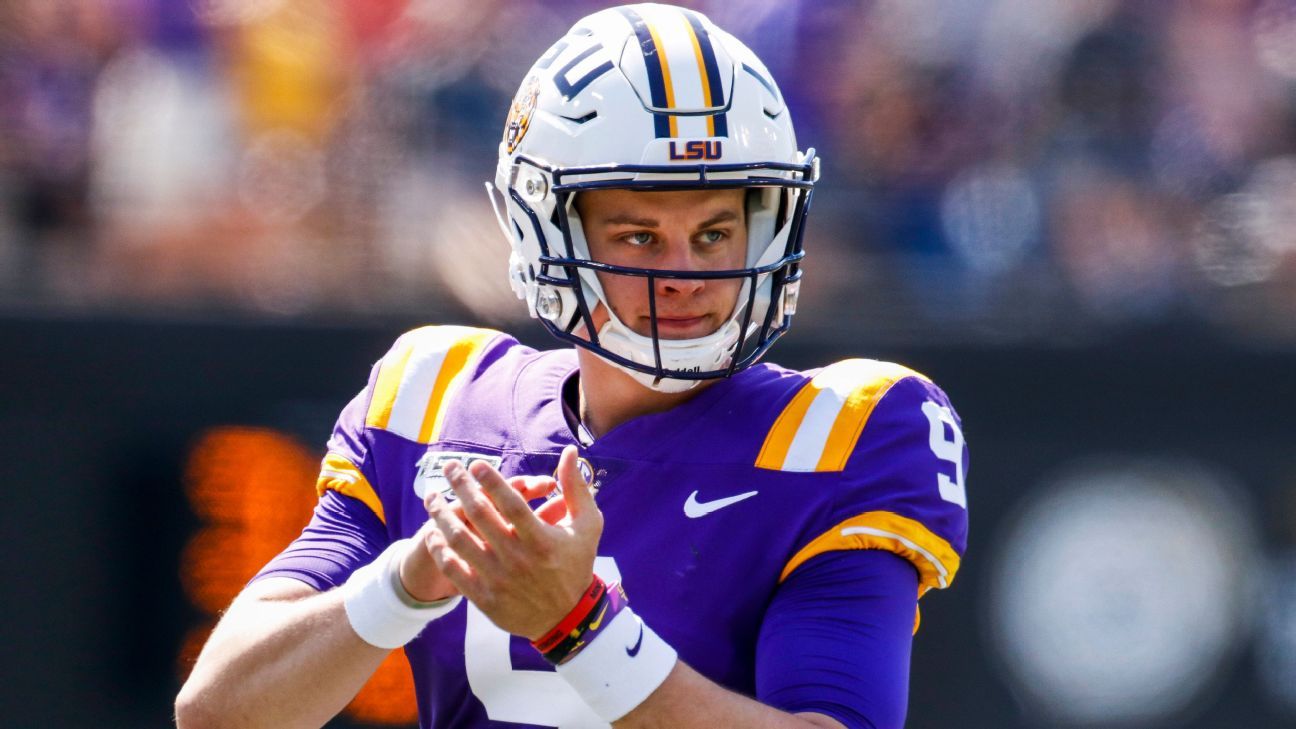CINCINNATI — The lone solace for the Cincinnati Bengals this season was what would come with the top pick in the NFL draft.
As the 2-14 Bengals careened toward the worst record in the NFL, LSU quarterback Joe Burrow set record after record on the way to a Heisman Trophy and national championship.
In April, Cincinnati could draft Burrow with the top overall pick in the draft and acquire its quarterback of the future, one who could revitalize a despondent fan base and help a franchise without a playoff win for almost 30 years.
But even after making that pick on April 23 in Las Vegas, the clock still will be ticking on their front office. Cincinnati’s traditional offseason approach will be tested in the upcoming months after its worst season in 17 years.
“Our roster needs help,” Bengals director of player personnel Duke Tobin said last month at the Senior Bowl. “We’re going to look to help it every way that is possible.”
The front office will be challenged to build a winner for second-year coach Zac Taylor. If the Bengals take Burrow as expected, a quarterback on a rookie contract opens up more cap room (currently at $51.6 million) to improve a team that hasn’t made the playoffs since 2015. And adding talent with a highly drafted quarterback on his rookie contract has proved beneficial recently for the Baltimore Ravens, Los Angeles Rams and Kansas City Chiefs.
Finding the winning mix has been difficult for a franchise that has traditionally opted to build through the draft but struggled to find impactful talent.
The Bengals have tied for the lead or led the NFL in drafted players on their roster since 2015. But tight end Tyler Eifert, drafted in 2013, is the most recent draft pick to represent the Bengals at the Pro Bowl (in 2015). Cincinnati has hit on some recent picks (running back Joe Mixon in 2017) but are still waiting on recent first-round picks to produce up to their draft slot (offensive lineman Billy Price, cornerback William Jackson and receiver John Ross).
If the Bengals want a quicker turnaround and better team around a young, cheap quarterback, Tobin and the front office might be forced to change their ways by trading veterans and spending during free agency.
According to ESPN Stats & Information research, Cincinnati is ranked 30th in total spending and guaranteed money to free agents over the past five years. Of the top 10 salaries on the books for the 2020 season, one belongs to an external player signed during free agency. Offensive lineman John Miller, signed in 2019 after four seasons with the Bills, has a cap hit of $5.33 million that ranks 10th.
“You don’t just bring in a guy, overpay him, and then he doesn’t produce in that role,” said Tobin of the aversion to potentially high-impact free agents. “Then you’re in the same spot, just with less capital to improve the situation.”
Instead, Cincinnati has opted to extend veterans before they hit the open market. Of the $98.3 million that represents the top 10 salaries against the Bengals’ cap in 2020, $67.8 million is from contracts that were extended.
But investing lots of money into older players presents its own risks. Defensive tackle Geno Atkins and defensive end Carlos Dunlap have two of the top four cap hits in 2020 and are the top two in 2021. Each tied for 86th in sacks created last season (four), according to ESPN Stats & Info data.
On top of the wariness of free agency, the Bengals typically don’t make midseason deals. Cincinnati hasn’t traded a player after Week 1 of the regular season since 2011, when quarterback Carson Palmer was holding out and dealt to the Raiders in October of that year.
1:45
Mel Kiper Jr. doesn’t see any way the Bengals take Chase Young over Joe Burrow with the No. 1 overall draft pick.
As soon as it became apparent last season that the Bengals were headed toward an extensive rebuilding process, Tobin confirmed other teams showed interest in a few players last fall, but Cincinnati opted to hold on to their veterans instead of moving them for draft picks.
One of those was wide receiver A.J. Green, who was on an expiring contract last season. The Bengals opted to keep Green instead of dealing him for a pick that could have been used in the draft filled with quality receivers. Instead, the Bengals are working toward a deal that will keep the 31-year-old Green in Cincinnati, at least for another season.
“We are not trying to get better by losing our best players,” Tobin said. “In our opinion, that’s not the path forward. Lose your best players, how do you get better by doing that?”
If the Bengals don’t re-sign Eifert and Green, adding a pass-catching tight end and another top wide receiver will help Burrow’s development. Green has been one of the most productive receivers in the league, but he has missed 23 games over the past two seasons due to injury. With Green out for the entire 2019 season, the offense struggled to create explosive passing plays.
The Bengals also could be in the market for a veteran quarterback if Andy Dalton is traded. Marcus Mariota or Case Keenum could be viable backup options to help Burrow make the transition to the NFL.
Those in Cincinnati might consider eschewing the old ways as drastic measures, but when you haven’t won a playoff game since 1991, change is in order.
“The game today is you can’t just hope you draft well and not go after free agents and just you end up in the Super Bowl,” Palmer told CBS Radio. “You’ve gotta go get it.”
